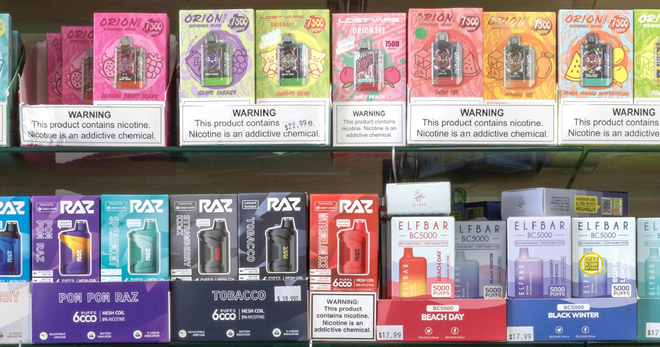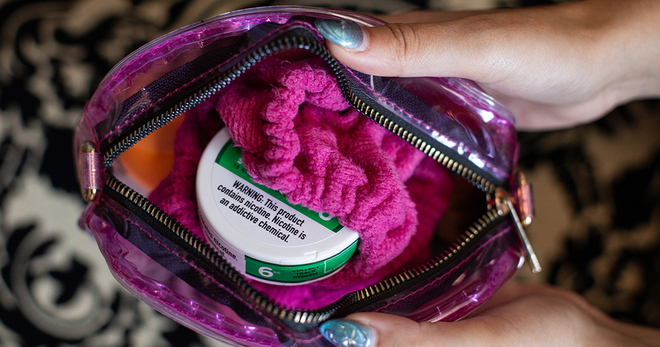Cooling flavors dominate the e-cigarette market, underscoring need for strong rules on menthol
Sales of e-cigarettes in “cooling” flavors like menthol, ice, cool, frost, chill, or freeze rose by nearly 700% and their U.S. market share doubled to 55% between 2017 and 2021, according to findings published in Tobacco Control by CDC Foundation in collaboration with Truth Initiative®.
The study – the first to evaluate sales trends of cooling flavored e-cigarettes in the U.S. – also found that within the sales of disposables, the market share of cooling flavors other than menthol or mint (such as “Banana Ice”, “Strawberry Freeze” or “Frosted Apple”) increased from 4.5% to 99.2%. Findings indicate that cooling flavors are a huge part of the e-cigarette market and that effective policies addressing flavored e-cigarette use among youth must include all cooling flavors – not just those specifically labeled as menthol.
Cool flavors appeal to young people
What flavor is an ice vape
Flavors that produce a cooling sensation, such as menthol, enhance the appeal of e-cigarettes among youth. In addition, use of menthol cigarettes is tied to greater nicotine dependence and tobacco smoking among youth and young adults. While policies addressing menthol-flavored tobacco products are gaining traction, they don’t always include cool flavors that aren’t specifically menthol. Not all e-cigarettes that produce cooling sensations are labeled as menthol, presenting a “loophole” in regulations designed to curtail menthol e-cigarette sales and use.
Turning to other “cool” flavors
How popular are ice or mint flavored vapes
Researchers looked at e-cigarette retailer scanner data provided by IRI and analyzed retail sales by cooling flavor between January 2017 and November 2021. Sales of e-cigarettes in flavors like menthol, “ice,” “cool,” “frost,” “chill,” or “freeze” rose by nearly 700% from 1.5 million units to 12 million units and their U.S. market share doubled from 26% to 55% between 2017 and 2021. Although menthol remains the predominant cooling flavor, its sales decreased from 94.5% to 73% during the same timeframe. Meanwhile, disposable e-cigarettes in cool flavors other than menthol or mint like “banana ice,” “peach freeze,” and “frosted apple” skyrocketed in sales, going from 4.5% to nearly all disposable market share (99.2%).
Researchers also note that there weren’t significant price differences between cooling and non-cooling flavored disposable e-cigarettes. The finding suggests that the increase in cooling disposable e-cigarette sales was likely driven by user taste preferences rather than lower price.
The findings “indicate a growing market for non-menthol flavored products in the U.S. that provide a similar cooling sensation to mentholated e-cigarettes,” the authors write. Policies that aren’t all-encompassing of menthol in all its forms may prompt e-cigarette users to switch to flavors that remain on the market, undercutting the spirit of menthol policies.
The need for strong menthol regulations
Are menthol vapes regulated by the FDA
In 2022, the Food & Drug Administration announced historic, long-awaited steps to remove menthol cigarettes and all flavored cigars from the market. Although the proposed rule does not currently extend to menthol e-cigarettes, the tobacco industry’s demonstrated efforts to skirt menthol regulations on combustible tobacco also apply to menthol e-cigarettes, providing clear support for why the FDA must protect against tobacco industry efforts to exploit loopholes through clever marketing tactics.
For example, in the EU, where menthol cigarettes are banned, companies exploited a lengthy implementation period to introduce products that contained significant amounts of menthol even though they weren’t labeled as such. In the U.S., tobacco companies have already tried to dodge local sales restrictions on tobacco products including flavored e-cigarettes by using “concept” flavors – vague, non-characterizing descriptions like Marigold, Arctic, and Solar— to communicate a flavor profile without naming a specific flavor.
To ensure the final menthol rules are strong, the FDA must find a balance for what it means by “characterizing flavor” so that it is specific enough to capture mentholated products that have caused so much public health harm, and not be so specific that it is easily circumvented. Comprehensive menthol policies covering the spectrum of tobacco products and cooling flavors are needed to fully protect the health of young people who are especially drawn to these flavors and products.
More in emerging tobacco products
Want support quitting? Join EX Program
By clicking JOIN, you agree to the Terms, Text Message Terms and Privacy Policy.
Msg&Data rates may apply; msgs are automated.


